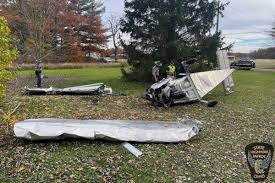Cfbwh – Revolutionizing Flight Tracking!
Introduction:
In the realm of aviation, the ability to track flights accurately is critical for ensuring safety and operational efficiency. With the rise of air traffic and the need for more precise monitoring, the aviation industry has seen significant advancements in tracking technologies.
Among these innovations is Cfbwh, a groundbreaking flight tracking system designed to address the limitations of traditional methods and enhance the way we manage air traffic.
The Evolution of Flight Tracking:

Flight tracking has evolved considerably from its early days. Initially, tracking was done using basic radar systems and manual logs, which often fell short in terms of accuracy and coverage. As air traffic grew, so did the need for more advanced tracking solutions.
Over time, improvements in technology introduced more sophisticated systems, providing better accuracy and reliability in monitoring flights.
1. Early Challenges in Tracking Flights:
In the early days of flight tracking, technology was quite limited. Early systems struggled with accuracy and often had gaps in data coverage, which could lead to potential safety issues.
The limitations of these early technologies highlighted the need for innovation to keep pace with the increasing demands of modern aviation.
2. The Need for Innovation:
The aviation industry recognized that to meet the growing challenges of air traffic management, there was a pressing need for innovation. Traditional tracking systems were not equipped to handle the complexities of increased air traffic and the demands for real-time data.
This spurred the development of more advanced technologies aimed at improving flight tracking accuracy and reliability.
What Is Cfbwh?
Cfbwh is a revolutionary flight tracking system that represents a significant advancement over traditional methods. It integrates cutting-edge technology to provide comprehensive and accurate tracking of aircraft.
By leveraging satellite data, ground-based sensors, and advanced algorithms, Cfbwh offers a robust solution for monitoring flights in real time, addressing many of the limitations of older systems.
1. The Technology Behind Cfbwh:
Cfbwh operates through a sophisticated blend of technologies. It utilizes satellite communication to track flights from anywhere in the world, including remote areas where traditional systems might struggle.
The system processes real-time data from various sources, including onboard systems and ground sensors, to provide accurate and up-to-date information about flight positions, altitudes, and speeds. This integration of technology ensures a higher level of precision and reliability in flight tracking.
2. How Cfbwh Works?

Cfbwh functions by collecting data from multiple sources and integrating it into a cohesive tracking system. The technology behind Cfbwh involves real-time data processing, which allows for continuous updates on flight status.
This system provides air traffic controllers and aviation professionals with a comprehensive view of flight operations, enabling better management and response to any issues that may arise.
3. Advantages Over Traditional Systems:
Cfbwh offers several notable advantages over traditional flight tracking systems. One of the primary benefits is its enhanced accuracy. By using advanced satellite technology and real-time data processing, Cfbwh provides more precise information about aircraft positions, reducing the likelihood of data gaps and inaccuracies.
Additionally, Cfbwh’s broader coverage ensures that flights can be tracked even in areas where older systems may have limitations. This improved reliability contributes to overall safety and efficiency in air traffic management.
Also Read: Pokiç – A Diverse Collection of Free Games!
Community Reactions:
The introduction of Cfbwh has elicited a range of reactions from the aviation community and the public. There has been a mix of excitement about the potential improvements in flight tracking and concerns related to the integration of new technology.
The community has expressed both hope for enhanced safety and some reservations about the implications of transitioning to a new system.
1. Heartbreak and Condolences:
In the wake of aviation incidents where traditional tracking systems fell short, the aviation community has experienced significant heartbreak and expressed condolences to affected families.
The implementation of Cfbwh is seen as a step towards preventing such tragedies in the future, offering hope for improved safety and more reliable tracking in critical situations.
2. Questions and Speculations:
With any new technology, there are always questions and speculations about its effectiveness and impact. Cfbwh is no exception, as industry professionals and stakeholders raise queries about its reliability, potential drawbacks, and how it compares to existing systems.
These discussions are important for understanding the full implications of adopting Cfbwh and addressing any concerns that may arise.
3. Calls for Improved Safety Measures:
The rollout of Cfbwh has reinvigorated calls for enhanced safety measures within the aviation industry. Many stakeholders are advocating for ongoing improvements and rigorous testing of new technologies to ensure they meet the highest safety standards.
The emphasis is on creating a robust safety framework that incorporates the latest advancements while maintaining a focus on reliability and effectiveness.
Case Studies:

Case studies of flight incidents before and after the introduction of Cfbwh provide valuable insights into its impact. These studies highlight how the new system has improved tracking accuracy and response times, leading to better management of complex flight operations and enhanced safety outcomes.
1. Before and After Scenarios:
Examining scenarios before and after the implementation of Cfbwh reveals the significant improvements made in flight tracking. The system’s advanced capabilities have addressed many of the shortcomings of previous technologies, resulting in more reliable and comprehensive tracking data.
2. Success Stories:
Cfbwh has been instrumental in several success stories where its advanced tracking capabilities have prevented incidents and improved flight management. These success stories underscore the system’s potential to make a positive impact on aviation safety and operational efficiency.
3. Lessons Learned:
The integration of Cfbwh has provided valuable lessons for the aviation industry. These lessons include the importance of adopting advanced technologies to address existing limitations and the need for continuous innovation to keep pace with evolving industry demands.
The experiences gained from implementing Cfbwh are helping to shape future advancements in flight tracking.
Challenges and Considerations:
Despite its advancements, Cfbwh faces several challenges that need to be addressed. These include integrating the system with existing infrastructure, managing implementation costs, and ensuring ongoing development to keep up with technological advancements.
Addressing these challenges is crucial for maximizing the benefits of Cfbwh and ensuring its continued success.
Also Read: www socceragency.net media – Discover Soccer News!
The Future with Cfbwh:
Looking ahead, the future of flight tracking with Cfbwh is promising. Emerging technologies such as artificial intelligence and machine learning are expected to further enhance the system’s capabilities.
Expanding applications of Cfbwh could include improved navigation systems and more efficient air traffic management. Continuous improvement will be key to maintaining Cfbwh’s position at the forefront of flight tracking technology and meeting the evolving needs of the aviation industry.
1. Emerging Technologies:
As technology continues to advance, Cfbwh is likely to incorporate emerging technologies to further enhance its functionality. Innovations such as AI and advanced data analytics could provide even more precise tracking and improved predictive capabilities, contributing to safer and more efficient air travel.
2. Expanding Applications:
The applications of Cfbwh are expected to grow beyond traditional flight tracking. Potential areas of expansion include integrating the system with new navigation technologies, enhancing safety protocols, and streamlining air traffic management processes. These expanded applications will help address the diverse needs of the aviation industry.
3. Continuous Improvement:
To stay at the cutting edge of flight tracking technology, Cfbwh will require ongoing development and refinement. Continuous improvement efforts will focus on incorporating new technologies, addressing emerging challenges, and ensuring the system remains effective and reliable.
This commitment to evolution will be crucial for maintaining Cfbwh’s role in advancing aviation safety and efficiency.
FAQ’s:
1. What is Cfbwh?
Cfbwh is an advanced flight tracking system that integrates satellite data, ground sensors, and sophisticated algorithms. It provides real-time, accurate tracking of aircraft, enhancing air traffic management.
2. How does Cfbwh improve flight tracking compared to traditional systems?
Cfbwh offers greater accuracy and wider coverage by utilizing real-time satellite technology. This reduces data gaps and inaccuracies common in older tracking methods.
3. What are some challenges associated with implementing Cfbwh?
Challenges include integrating the system with existing infrastructure and managing implementation costs. Additionally, continuous development is needed to keep up with technological advancements.
4. How has Cfbwh been received by the aviation community?
The aviation community has responded with both excitement and concern. There is optimism about its safety benefits, but also discussions about its effectiveness and integration challenges.
5. What are the future prospects for Cfbwh?
Cfbwh is expected to incorporate emerging technologies like AI and machine learning. Future developments will focus on expanding applications and continuous improvement to maintain its leading role in flight tracking.
Conclusion:
Cfbwh represents a major advancement in flight tracking, offering enhanced accuracy and broader coverage compared to traditional systems. Its implementation promises significant improvements in aviation safety and operational efficiency. As the technology evolves, Cfbwh is expected to incorporate emerging innovations, ensuring its continued relevance and effectiveness in managing modern air traffic.
Read More:


![[noblocc] kicked for being afk](https://relictimes.com/wp-content/uploads/2024/11/image-ezgif.com-webp-to-jpg-converter-2024-11-20T140233.477-1.jpg)


![[noblocc] kicked for being afk](https://relictimes.com/wp-content/uploads/2024/11/image-ezgif.com-webp-to-jpg-converter-2024-11-20T140233.477-1-300x200.jpg)








Post Comment